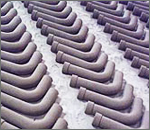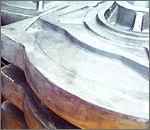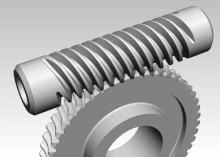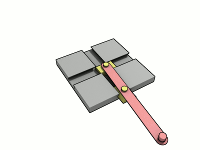Saturday, 17 August 2013
Friday, 16 August 2013
CO-2 MOULDING
| CO2 Molding |
Introduction: Co2 Casting is a kind of sand casting process. In this process the sand molding mixture is hardened by blowing gas over over the mold. This process is favoured by ho  bby metal casters because a lot of cost cutting can be done. In addition, one can be sure of getting dimensionally accurate castings with fine surface finish. But, this process is not economical than green sand casting process. bby metal casters because a lot of cost cutting can be done. In addition, one can be sure of getting dimensionally accurate castings with fine surface finish. But, this process is not economical than green sand casting process.Process: The Mold for Co2 Casting is made of a mixture of sand and liquid silicate binder which is hardened by passing Co2 gas over the mold. The equipment of the molding process include Co2 cylinder, regulator, hoses and hand held applicator gun or nozzle. Carbon di oxide molding deliver great accuracy in production. Any existing pattern can be used for the molding purpose which can be placed in the mold before the mold is hardened. This method helps in producing strong mold and cores that can be used for high end applications. If the process is carefully executed then casting can be as precise as produced by the shell casting method. Carbon di oxide casting is favored both by the commercial foundrymen and hobbyist for a number of reasons. In commercial operations, foundrymen can assure customers of affordable castings which require less machining. The molding process which can be fully automated is generally used for casting process that require speed, high production runs and flexibility. In home foundries this is one of the simplest process that improves the casting quality . Applications: Co2 casting process is ideal where speed and flexibility is the prime requirement. molds and cores of a varied sizes and shapes can be molded by this process.  Advantages: This process has many advantages in comparison to other forms of castings some of them are as follows:
|
Thursday, 15 August 2013
Elliptical Trammel
A trammel of Archimedes is a mechanism that traces out an ellipse It consists of two shuttles which are confined ("trammelled") to perpendicular channels or rails, and a rod which is attached to the shuttles by pivots at fixed positions along the rod. As the shuttles move back and forth, each along its channel, the end of the rod moves in an elliptical path. The semi-axes a and b of the ellipse are the distances between the end of the rod and the two pivots. An ellipsograph is a trammel of Archimedes intended to draw, cut, or machine ellipses, e.g. in wood or other sheet materials. An ellipsograph has the appropriate instrument (pencil, knife, router, etc.) attached to the rod. Usually the distances a and b are adjustable, so that the size and shape of the ellipse can be varied.
Scotch Yoke
The Scotch yoke is a mechanism for converting the linear motion of a slider into rotational motion or vice-versa. The piston or other reciprocating part is directly coupled to a sliding yoke with a slot that engages a pin on the rotating part. The shape of the motion of the piston is a pure sine wave over time given a constant rotational speed.
Friday, 9 August 2013
Thursday, 8 August 2013
Saturday, 3 August 2013
Subscribe to:
Comments (Atom)









